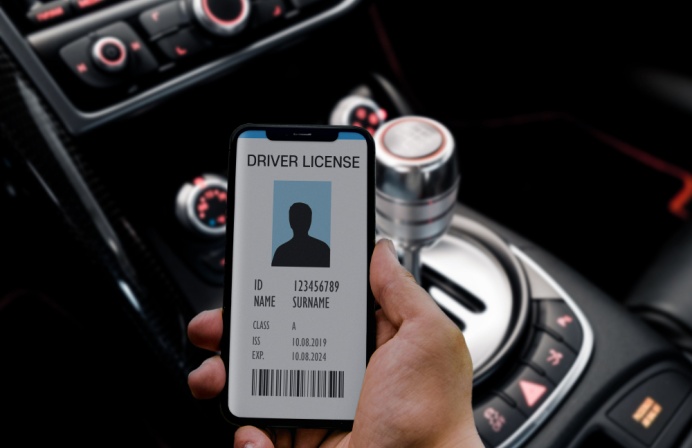
The Australian Taxation Office’s (ATO’s) Second Commissioner Jeremy Hirschhorn thinks so.
He sees tax in a “natural ecosystem”, where the tax office is focused not only on audits and timely prompts to enforce compliance, but also on compassion. An ATO that increasingly streamlines – digitally – the process of completing and lodging tax returns, and, crucially, does not ‘overreach’ when requesting taxpayers’ data.
A large part of the ATO’s focus will be directed towards supporting Australia’s lockdown-battered business community, with the evolution of this ‘natural ecosystem’ increasingly centred on business-to-business transactions – for instance, e-invoicing.
“Our hope is [for the ATO] to get out of the way, so there’s less time spent by entrepreneurs thinking about tax,” Hirschhorn said during a presentation at the Pearcey Oration in early September.
“Our goal is that tax just happens because we rely on the honesty of businesses and their natural system, so [tax] unlocks rather than suppresses entrepreneurial activity.”
A strong culture of compliance
The ATO has a strong foundation to become a more “compassionate” service provider.
According to Hirschhorn, 93.5 per cent of Australians, including businesses, are tax compliant, with a significant 90 per cent doing so voluntarily, attending to any ATO information request or issues promptly.
That compares favourably against the equivalent tax authority in the US, the Internal Revenue Service (IRS), which reports around 86 per cent net compliance.
This lower rate of compliance translated to a gap of almost US$600 billion in unpaid taxes in 2019 – a figure expected to balloon to $7 trillion this decade if not reined in, according to the US Treasury Department.
ATO compliance activities, such as audits and taxpayer alerts, by comparison, deliver about AU$15 billion per year (around two to three per cent of the total) to its coffers, against AU$400 billion that “comes in voluntarily”. In 2019-20, the ATO collected gross tax of about $537 billion, refunding $132 billion.
What helps boost the ATO’s figures is that 87.1 per cent of tax forms for taxpayers are pre-filled online, including via a smartphone.
According to Hirschhorn, users spend an average of only 15 minutes completing their returns themselves or via a tax agent. This financial year, the ATO will process about two billion digital transactions, effectively doubling those of the previous year.
“One great use of data and our analytical capability is that it allows us to put serious effort into the health of tax at lodgement, tax performance, and compliance,” he said.
Hirschhorn notes that the “majority of Australians are honest and see the value of contributing to Australia”, ensuring the ATO can rely on users’ willing participation – a key impetus for the ATO’s investments in its front-line systems to hide unnecessary complexity for users.
Nudges key to the system’s health
More than 90 per cent of the ATO’s audits or changes to tax returns happen before lodgement through “data nudges”.
Last financial year, the ATO nudged around 350,000 taxpayers to re-check their figures, with a third “soldiering on, a third changing the data, and the rest trying to gain on our risk engine”, Hirschhorn said.
“The vast bulk of Australians will know from their ATO experience, if they get things wrong, we’ll send a little message: ‘Are you sure you want to lodge this?’
“That strategy dispels the myth that we’re [primarily] about catching people after the event.”
In Hirschhorn’s future ATO, there would still be a role for auditing – though this would increasingly be targeted at the big end of town.
“The dog can’t just bark; occasionally, it has to bite. That’s an obligation to those who just pay their tax willingly that we do hold others to account.
“However, audits will increasingly be skewed to large business where the data is more bespoke [and] it’s harder to get.”
The ATO’s chatbot has about 1.5 million tax conversations a year, reducing the need for staff to deal with customers directly. And, while it may appear that the ATO, with its 900-plus data analysts, can integrate data to support real-time risk analysis of taxpayers, Hirschhorn acknowledged that this capability is not quite there yet.
More analysts are needed, he said, particularly to give each ATO team more real-time data on their performance. This, he added, would encourage further cross-agency collaboration and break down stubborn silos.
“Often, I hear leaders complain about silos, but I tell them they should think across [the] whole organisation. It’s management’s obligation to give team leaders metrics, so they don’t have to double guess.”
So, while he is keen for more data to be collected in house, the collection of more external data may prove more of a hindrance than a benefit to the ATO.
An ethical purview
Hirschhorn, conscious of potential overreach in the use of taxpayers’ data, called on the ATO to be more selective in its data processes, only collecting what it really needs to service its customers.
Ethical data use is, he stressed, “so important and often forgotten”.
“The temptation for a revenue authority is to hoover up as much data as possible and work out what to do later. Usefulness of data is a very important framework to have.”
“If we are confident [that] data is in the natural system of businesses, do we need to even hold that data if we’re assured tax obligations arising from the data are being met? Can we provide [those] natural systems access to some of our risk filters?”
Hirschhorn envisages a more data-driven tax system that, ultimately, “frees up [staff] to be more empathetic”, rather than simply viewing Australian taxpayers as “sums or data”. Taxpayers would be encouraged, during a tax discrepancy for instance, to initiate calls to the ATO to discuss options of deferring or working out a payment plan when needed.
The future tax system could be designed around the data when it is confident that datasets are very reliable, he said. This reduces the ATO’s need to primarily draw data into the system.
Anything more would be overreach.





